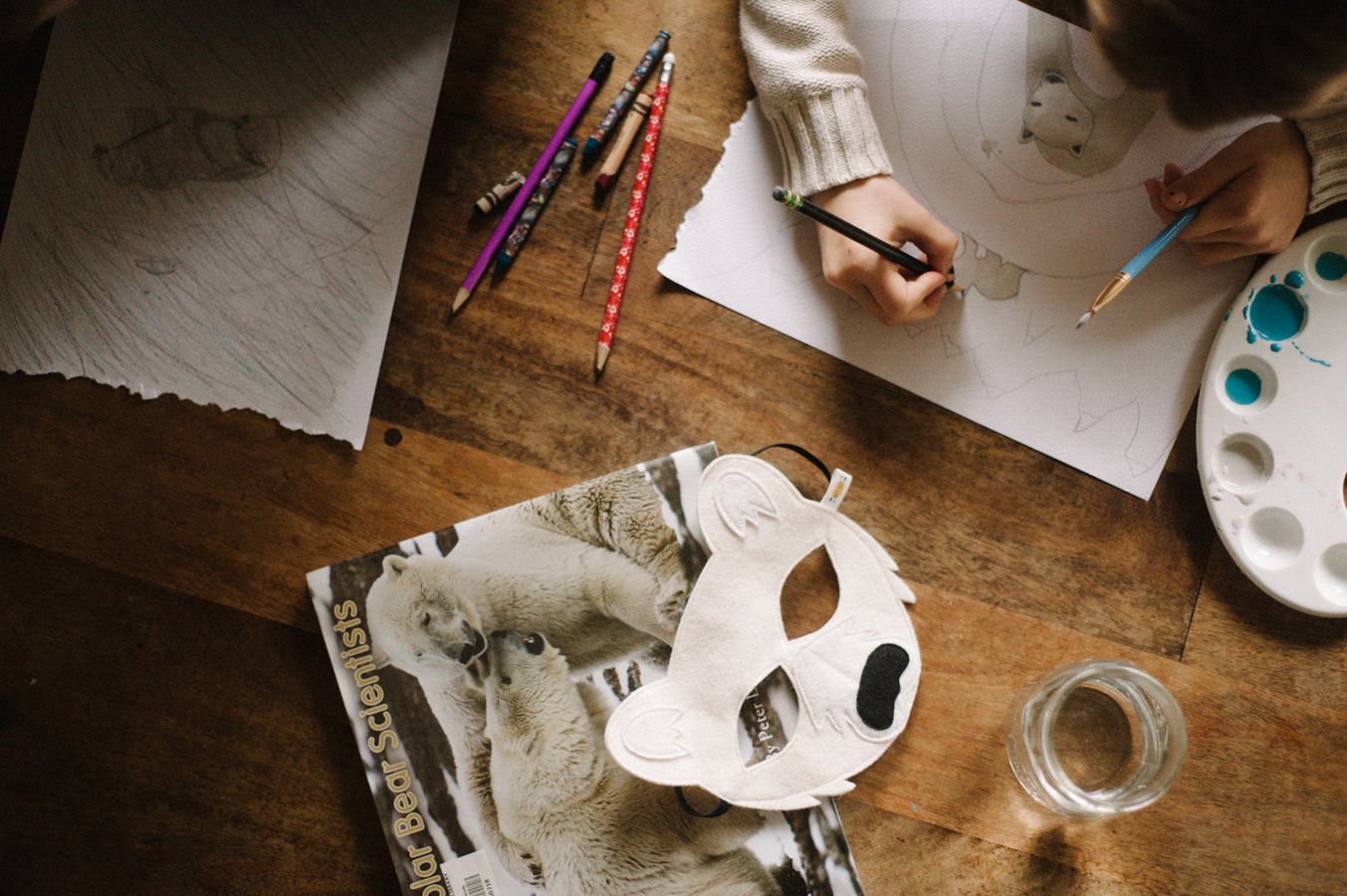

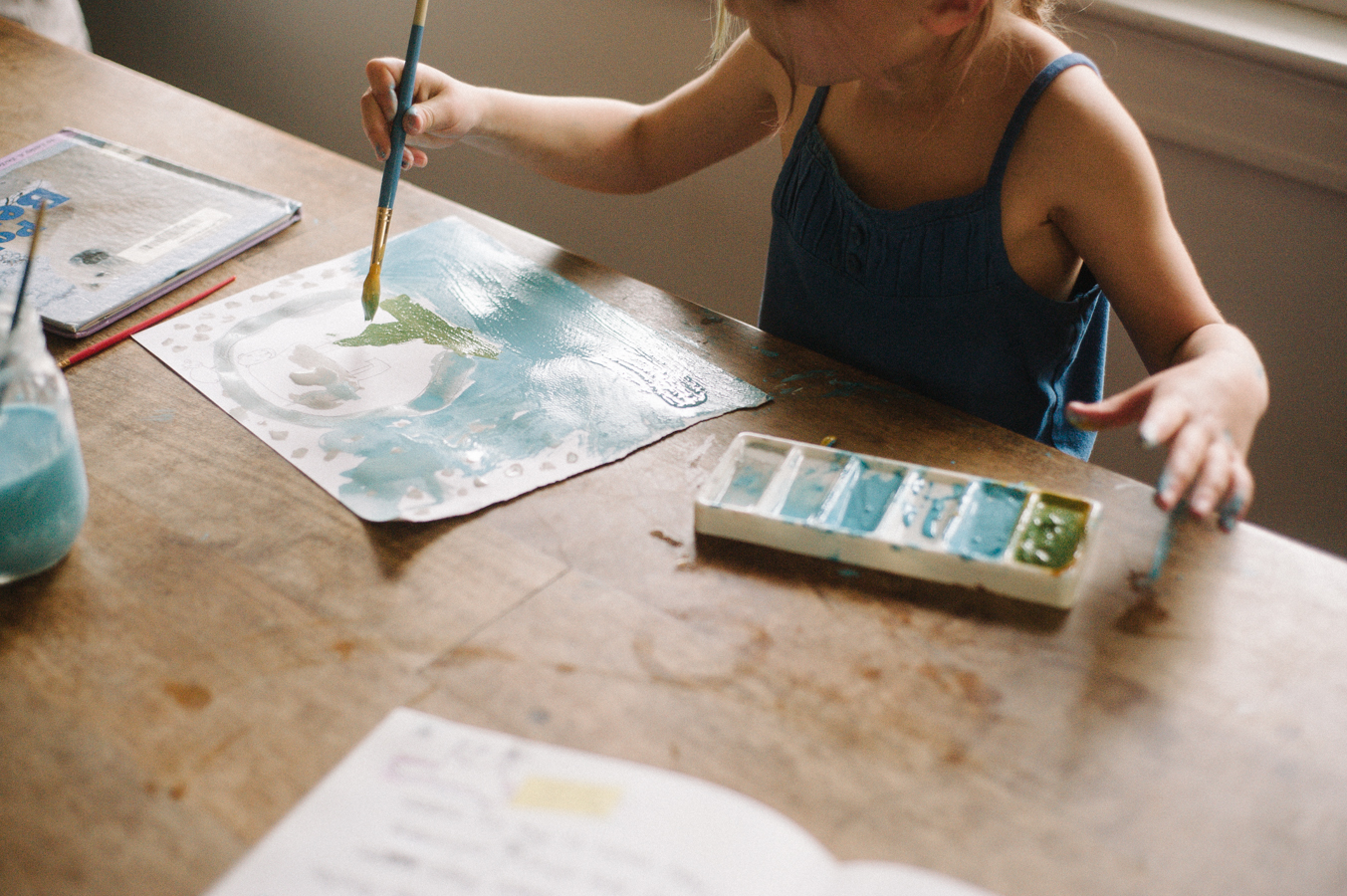
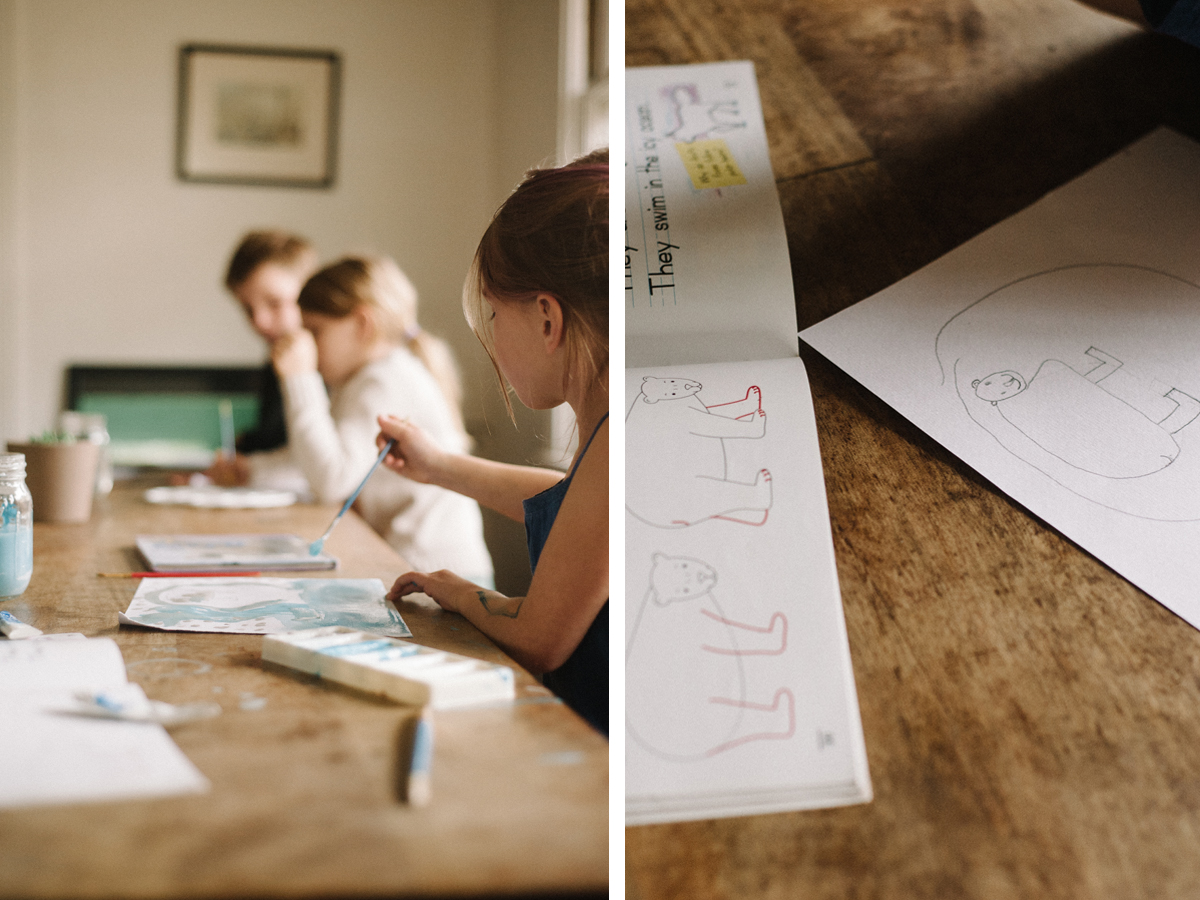
When I first began homeschooling, I always imagined learning fundamentals of math, language, science, and history in a playful and artful way. At that time, my oldest really struggled with writing-and-paper approaches to learning, and although we still included this aspect in our structured learning time, it worked best when I balanced these periods with stories, art projects, or outdoor/indoor play. These less structured lessons also helped me to include my three younger children, too. I should note here, so you don’t begin imagining a perfect world over here: my son (and my other children now) still balked at some of our more routine work, but mixing our days with play and art did create sweet incentives for the more challenging work.
At some point in the tumble of life and moving (twice in one year) last year, I lost the more artful aspect of our learning together. With so many other logistical things to finish around our home, I relied more on simple book lessons to work through our basics and then would release my children to their own whim. Our formal routine had reduced to reading and daily math, so I could make sure they were covered, and a ton of free play and self-directed learning. On a side note, if you’re new to homeschooling or even parenthood, be generous with yourself, your children, and your goals during this journey. As in nature, the rhythms within your home will have variegated seasons over the years, and each one will offer you something special to learn just the same, if you pay attention. Where ever you are, receive every bit and aim to be present.
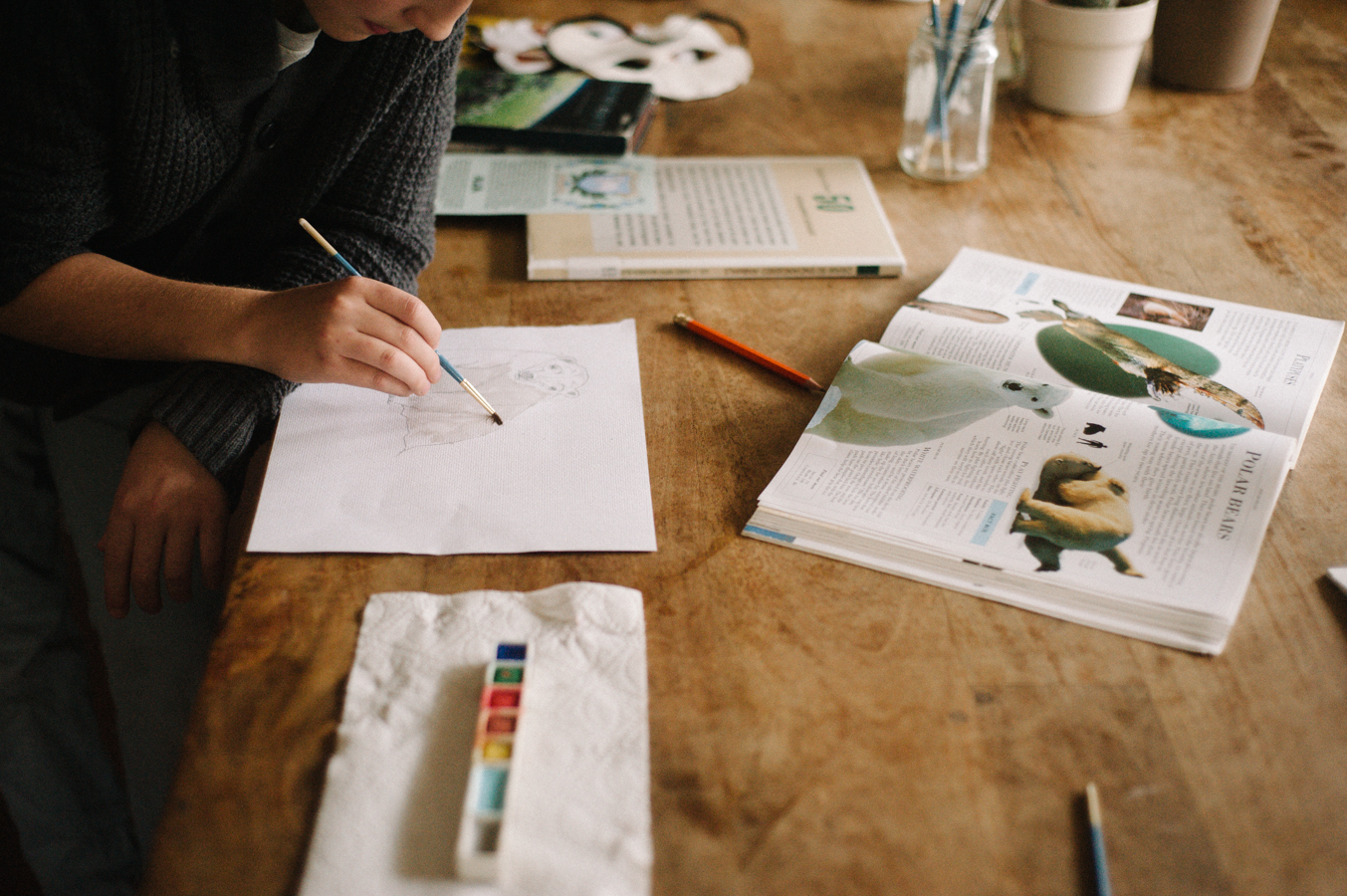
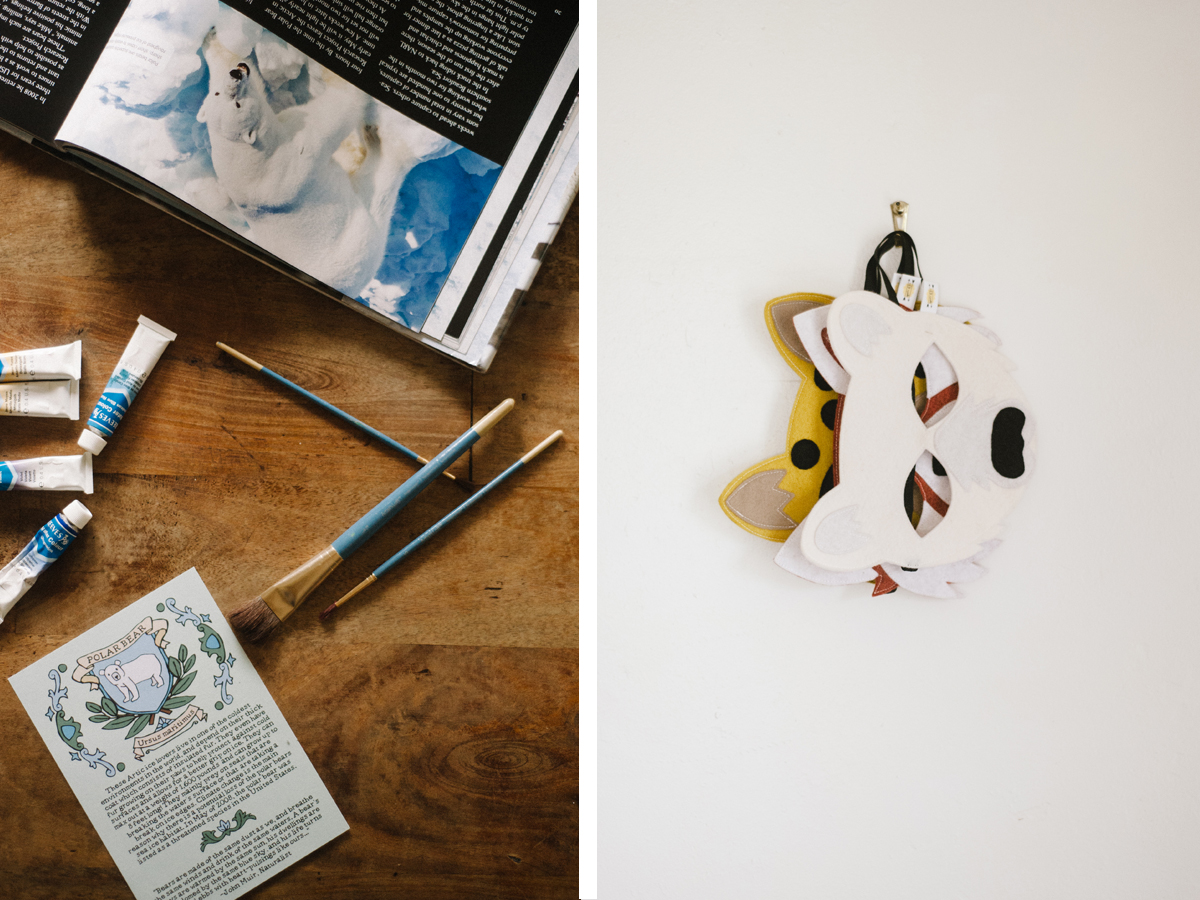
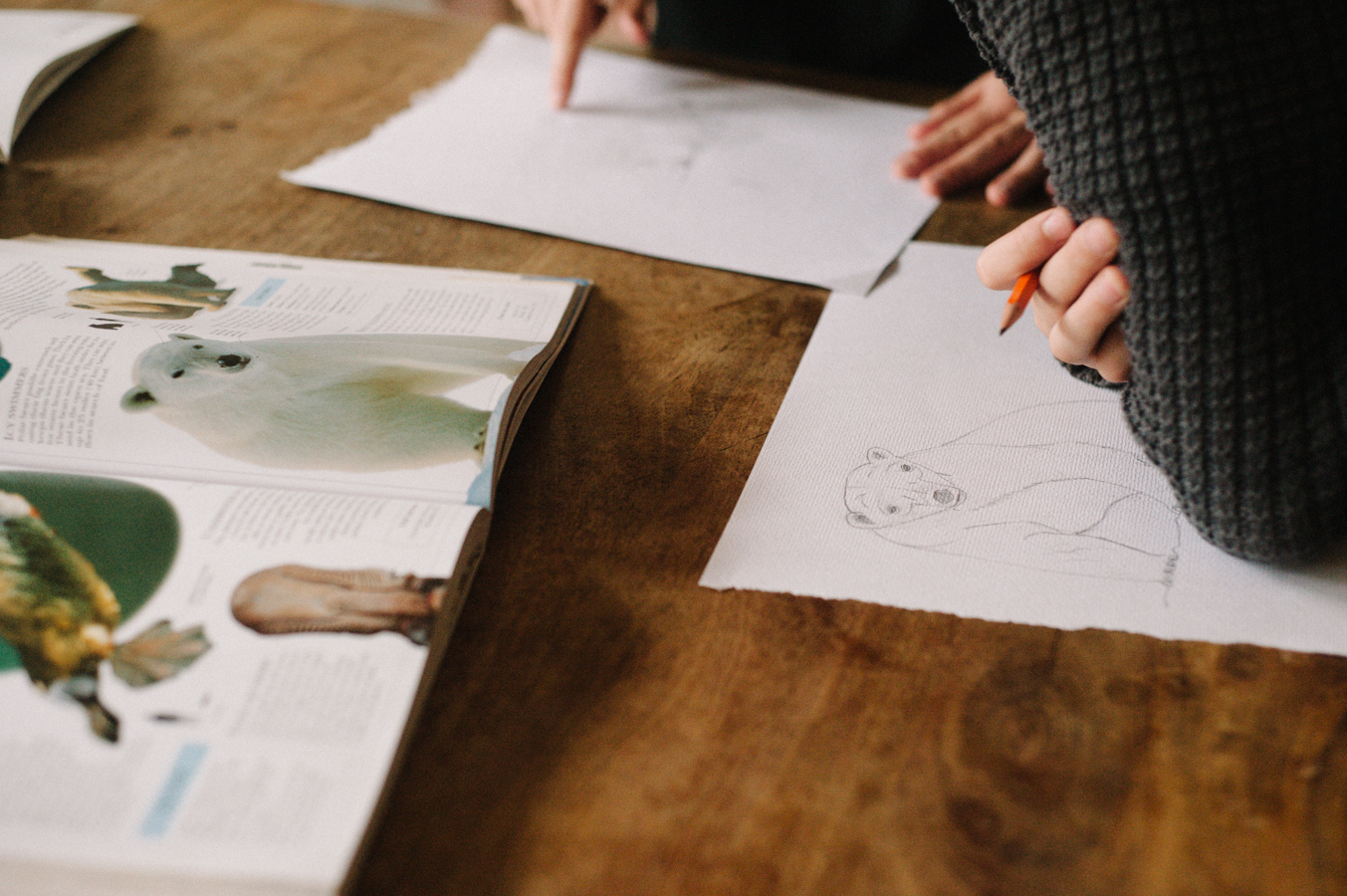
Over the last year, I’ve been re-evaluating the way we learn together at home and have adjusted a few details to include more artful expression and play, more dress-up and making, more discussion and room for independent pace of work. It’s certainly not a perfect science or formula. Some days, our routine seems to work well, in spite of the mess and distractions, and other days feel simply disastrous. But I’m learning as a parent to receive and enjoy those days, too, even if just to remember, tomorrow is new.
If you’re wanting to add more play and art to your learning experience, begin with an area that feels most natural in your own routine. For our family, studies in science and history have been the most natural place to begin again. This year, we’ve been creating body books about the systems in our bodies, and are also just beginning books about the natural world, too–one for animal life and one for plant life. Obviously, we don’t use each of them all the time, but the idea is to create a place to begin cataloguing the various lessons we’re learning along our way.
At the beginning of this year, we received a yearly subscription to the Opposite of Far’s Endangered Animal Mask Club. This has been a small and simple way to intertwine our learning about the animal world, writing, and art together. Each month the kids receive one new mask and information card featuring a specific endangered animal. We check out books from the library or use our Animal Encyclopedia or new favorite picture book, Animalium, to see more images and read more about the animal. Because we have an entire month, we have plenty of time to create several types of lessons or play experiences from them. Here’s a few ideas we’ve tried or plan to try with our mask club:
READ / Read the included card and any library books together. Learn about the animal’s environment and the reasons for their endangerment. Is there any way we can help?
DIFFERENTIATE / Study picture books and the illustrated card together. Discuss colors, shapes, and sizes of the animal. Are they always the same? How are they similar or different from other members of their family?
PLAY / Use the masks for pretend play. Re-create animal environments with sheets, furniture, or cardboard boxes. Even your older children will enjoy this. Give them some of the harder details, such a painting or cutting paper for a backdrop. My kids often do this on their own, especially when a new mask arrives or when the days are rainy and keep us indoors like here.
DRAW or PAINT / Take time to draw and paint your animal within its habitat. Refer to color and shape again and how you might mix paints to create the colors you need. If your children are young or struggle with drawing, try to find drawing books at your library that might show step-by-step instructions. We really like the Draw Write Now series, which also includes a few sentences to use for copywork with early writers. Some of the more rare endangered animals will be harder to find a drawing book. Consider how you might break down the strokes for your child to copy from you.
WRITE /Discuss what you’ve read about your endangered animal together. Help your older children find the main ideas: Where do they live? What do they look like? Why are they endangered? How can we help? Older children and advanced writers can write their own sentences and paragraphs, whereas younger children and those who find writing a more difficult skill might benefit from copying a few sentences they dictate to you (from what they learned).
For our family, I love using these animal masks as a simple way to encourage more pretend play and to inspire our own animal books. In busier months, we may have only used one or two of these, using them more for simple play around the house. You might find a ways to use them differently–or even for a birthday party or a gift. Either way, what a fun way to learn together about some beautiful animals that are currently struggling for survival.
For any of you interested in trying any of the Opposite of Far products, Jessica Near, the OOF founder, is offering 15%OFF any purchase using the code ENDANGERED. If you purchase a (6 or 12 month) subscription, you’ll also receive the Polar Bear mask and card for free. Regardless, I hope these ideas inspire some new ways to incorporate the arts and play into your learning at home.
——————————————
This post was sponsored by Opposite of Far, a business providing high-quality, handmade “tools” to parents and children for a richly imaginative and playful childhood. As always, all thoughts and images are my own, and thank you for supporting businesses that help keep this space afloat.


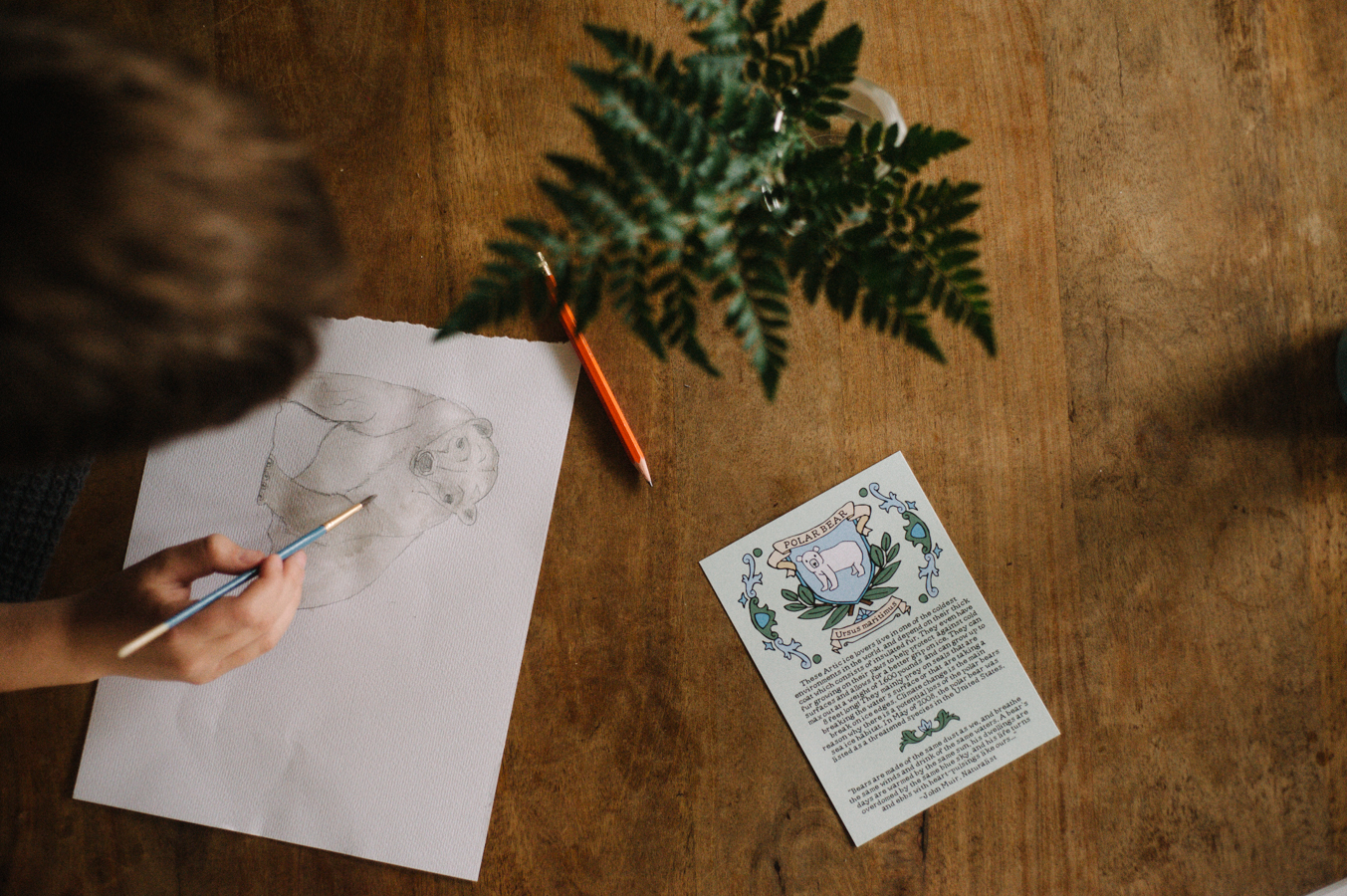
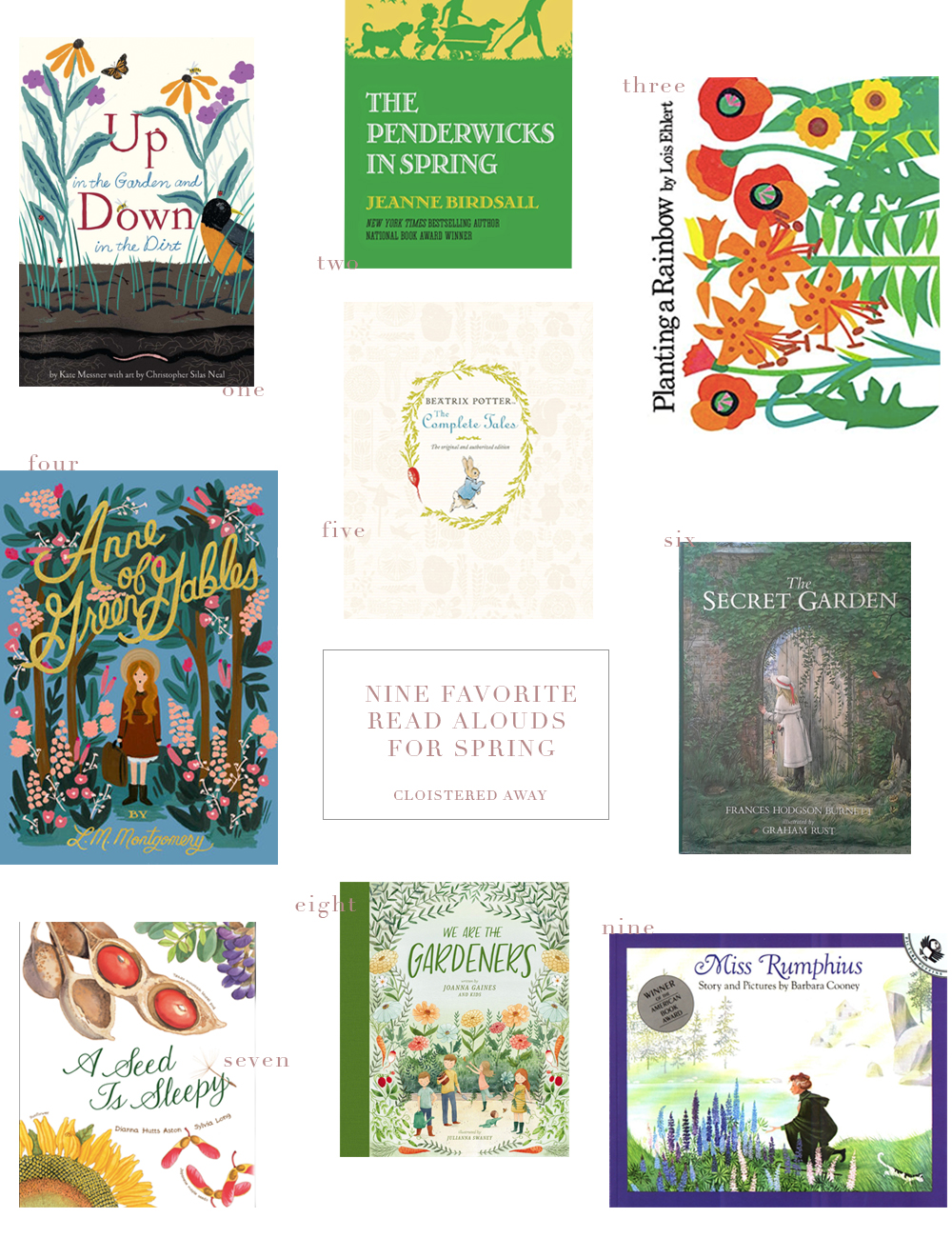
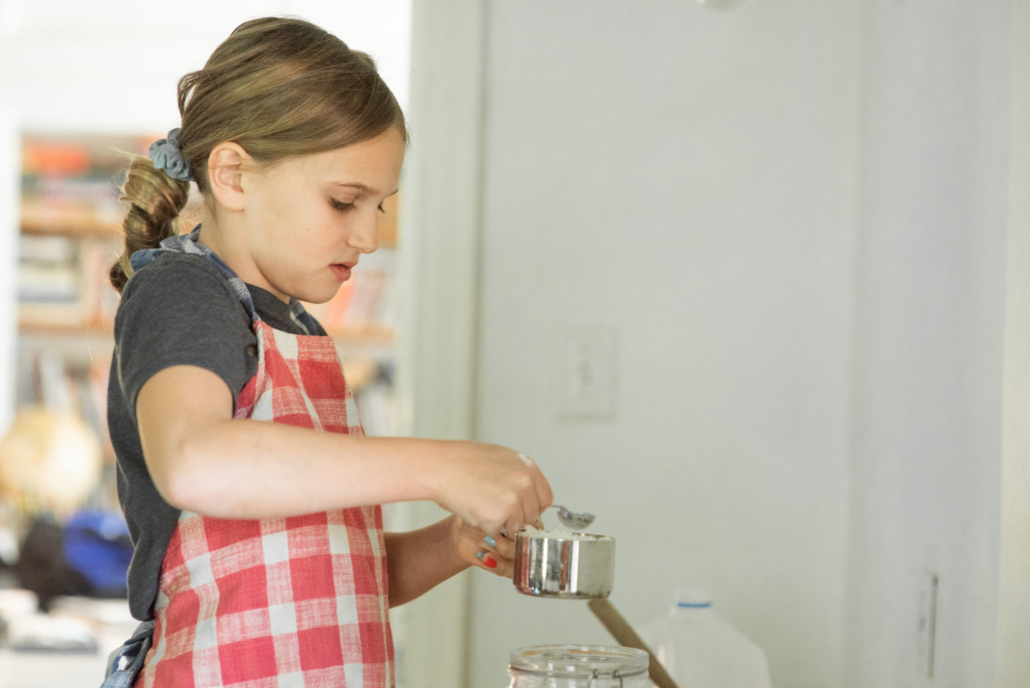
Comments
This post really resonated with me. I feel like we’ve gotten into a “trap” of workbooks. We do a classical approach (Classical Conversations, I think you do too?) but I’ve been wanting to be more “holistic” about some of what we do too. Combine art, history/science, handwriting more often. More of a unit approach, almost. I feel like we’ve kind of “separated” what we do into little compartments this past year. Classical Conversations has been great but I’d like to approach it more “artfully” and “playfully” as you say. I’m going to be rethinking our approach next year and hope to start sketchbooks that are related to this new approach.
Yes, that’s such a great idea. We are actually taking a break from our CC community this year and next. Our family has undergone so many changes, we needed a bit more flexibility. One of my favorite parts of this journey has been moving and changing along with our family’s needs. I can’t wait to see what you do. xo
Thank you for this post. I am a homeschooling mom that has triplet 4 year olds and I started schooling them in the fall – they will be five in August. Two boys (energetic, fun loving and EASILY distracted) and one girl that loves learning and as they say, and it is so true – girls tend to be more interested, mature, earlier. Your post is lovely & timely and was passed on to me by my friend Ursula Rosein (blogger over at KraftMint).
I have learned that I need to look at our homeschooling life as being interwoven into every facet while choosing to go a little less structured at this age (which is so against my very being!) While we are doing a lot of games to learn numbers with order and patterns along with the alphabet and its sounds and phonics – I did find that adding in songs to learn content beyond what they are taking in for math & abc’s has been really great. It is so easy for them to memorize through song that I have been able to set a grammar foundation this year that I didn’t even think possible. My kiddos know a good portion of early U.S. history, some science grammar, most U.S. states/capitals and all of the presidents… do they know what a president is, no – but when we go to talk about that – I’m hoping for a connection! All said, your post was so great as a reminder to take the material that we are teaching and infusing art – as a graphic designer I’m surprised that I haven’t done this more – thank you for this reminder!
Wow, Amanda! Triplets! How fun for them and you, but such a great example that each child (even when they’re exactly the same age) learns differently. I’m so grateful you stopped by and am glad to hear you were encouraged today. Thank you for sharing.
Lovely post, thank you! Can I ask when you started more “formal” homeschooling with your oldest? I have an almost-4-year-old boy and an 18 month old daughter. My son loves to run and jump around, ride his bike, and play pretend all day but detests coloring, painting, building with blocks, or anything else that comes even remotely close to those things. He does love stories and is always asking questions… Obviously there’s nothing really “wrong” with this picture, but it doesn’t feel like we’ll ever transition to letters, etc. I would love a little perspective, when you get a minute! Thanks so much : )
Hi Steph! Yes, we made the decision to homeschool my son’s PK year, although he turned five in the fall. We began with math, pre-reading and pre-writing that year. It’s so difficult in the beginning to know what’s best, since each child is so drastically different and each parent often has the same fears. In my experience, if your son’s not quite ready, go with it. Let him play and be little. Make some magnet letters or our favorite moveable alphabet for him to play with, but don’t stress or rush into anything. Use this time instead to begin reading blogs and books on different ideas for his temperament and learning style. If he’s a busy boy (possibly a kinesthetic learner, he might enjoy learning the alphabet through games–matching or hide-and-seek. For instance, introduce the letter “c” and its sound. Then mix it with a bunch of other letters and ask “can you find the sound that says /k/?” “Good job!” And so on. Introduce one new letter at a time so it doesn’t overwhelm him. Also, Handwriting Without Tears is such a great PK program “Get Set for School.” Sometimes busy bodies like writing more than reading, so you can sneak some sounds in while they practice learning to write. Does that make sense? Search “preschool at home” in my search bar to see a little more of what I used with my youngest. I hope this helps!
Thanks for the thoughtful response, Bethany! What really intrigues me about home education is the fact that it has the potential to be so holistic — the education of the whole person, not just the mind. And when I think about it that way I can ease up on the stress of teaching particular skills. My husband is the oldest of seven and was homeschooled. I never would have chosen this way on my own, but it is fascinating!
I especially loved what you said in your blog post: “As in nature, the rhythms within your home will have variegated seasons over the years, and each one will offer you something special to learn just the same, if you pay attention. Where ever you are, receive every bit and aim to be present.” Wise words.
I really like this post. It’s encouraging and inspiring during the days of getting lost in the workbooks. It reminds me of why we’ve chosen to learn with our children, it’s fun to learn! Love you.
Aw thanks Kristen. Yes! We all need those reminders, especially in the middle of the year. Thanks for sharing. xo
i was homeschooled (starting at the age of 10) and was a lot like your oldest son … needing more than a book to keep me occupied or on track. at first, allowing us to work in “unstructured places” (ie the stairs, outside, by the fire, etc.) seemed foreign to my mom. but after time, she opened up to it and i was able to accomplish so much more being in a free space!
it’s so interesting the way children learn and i cannot wait to see how my boys blossom and surprise me(!) with their learning preferences. i love that you share these tid-bits of homeschooling and am taking note … hoping one day i can actually talk with you and pick your brain some more :)
xo
Yes! I would love that, Sarah Nadine. And such an encouragement to hear your own story. I would love to hear more sometime. xo